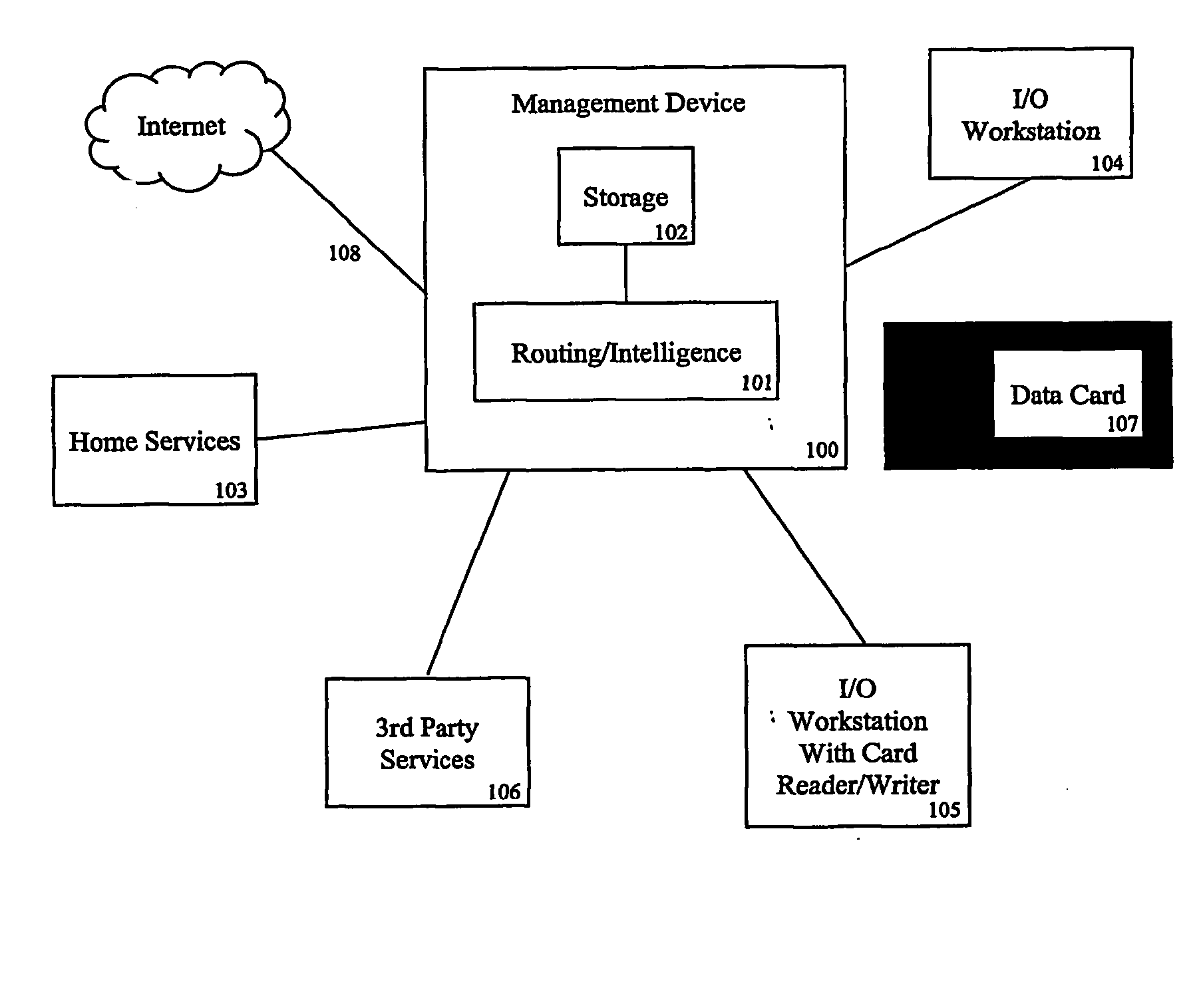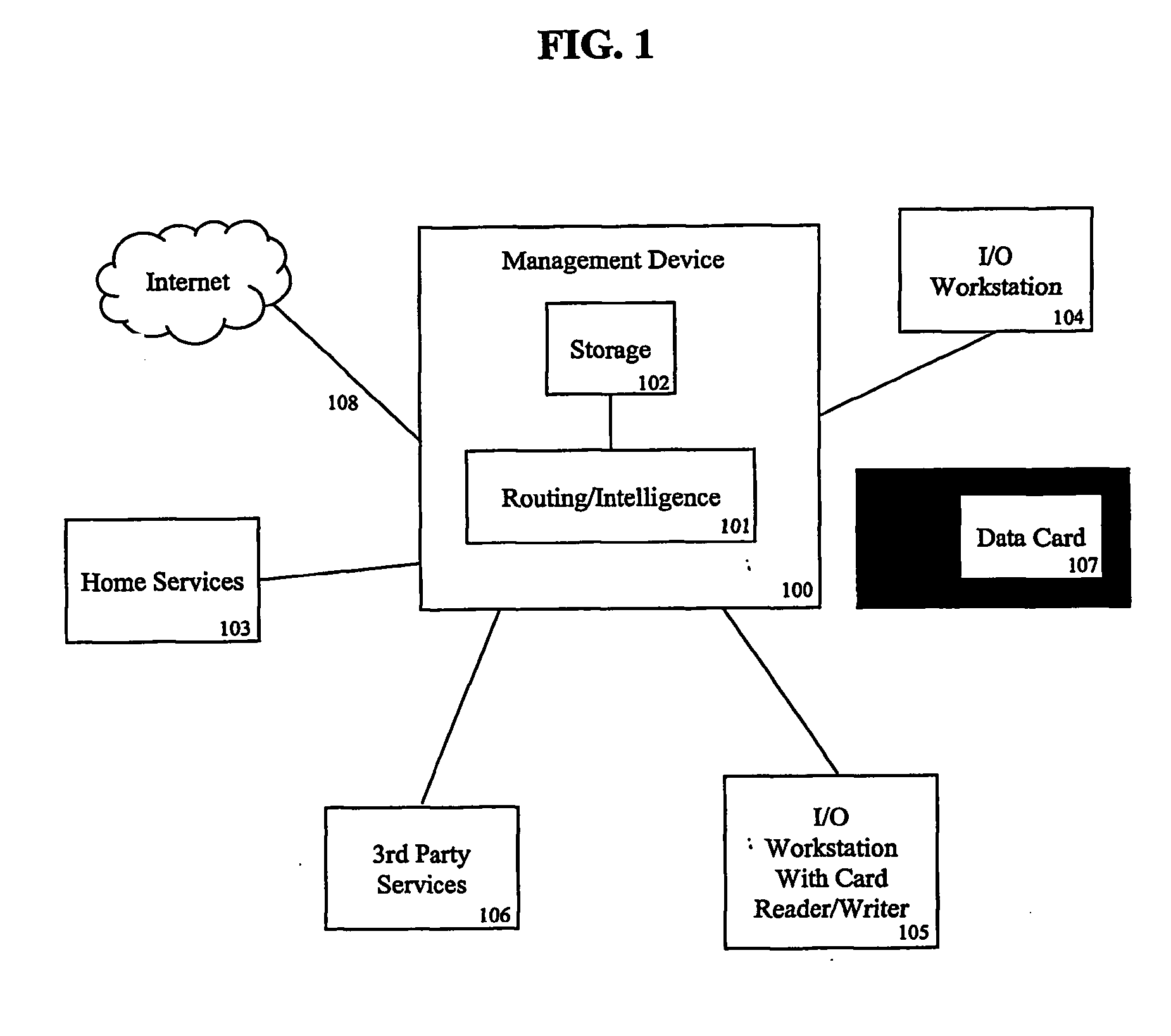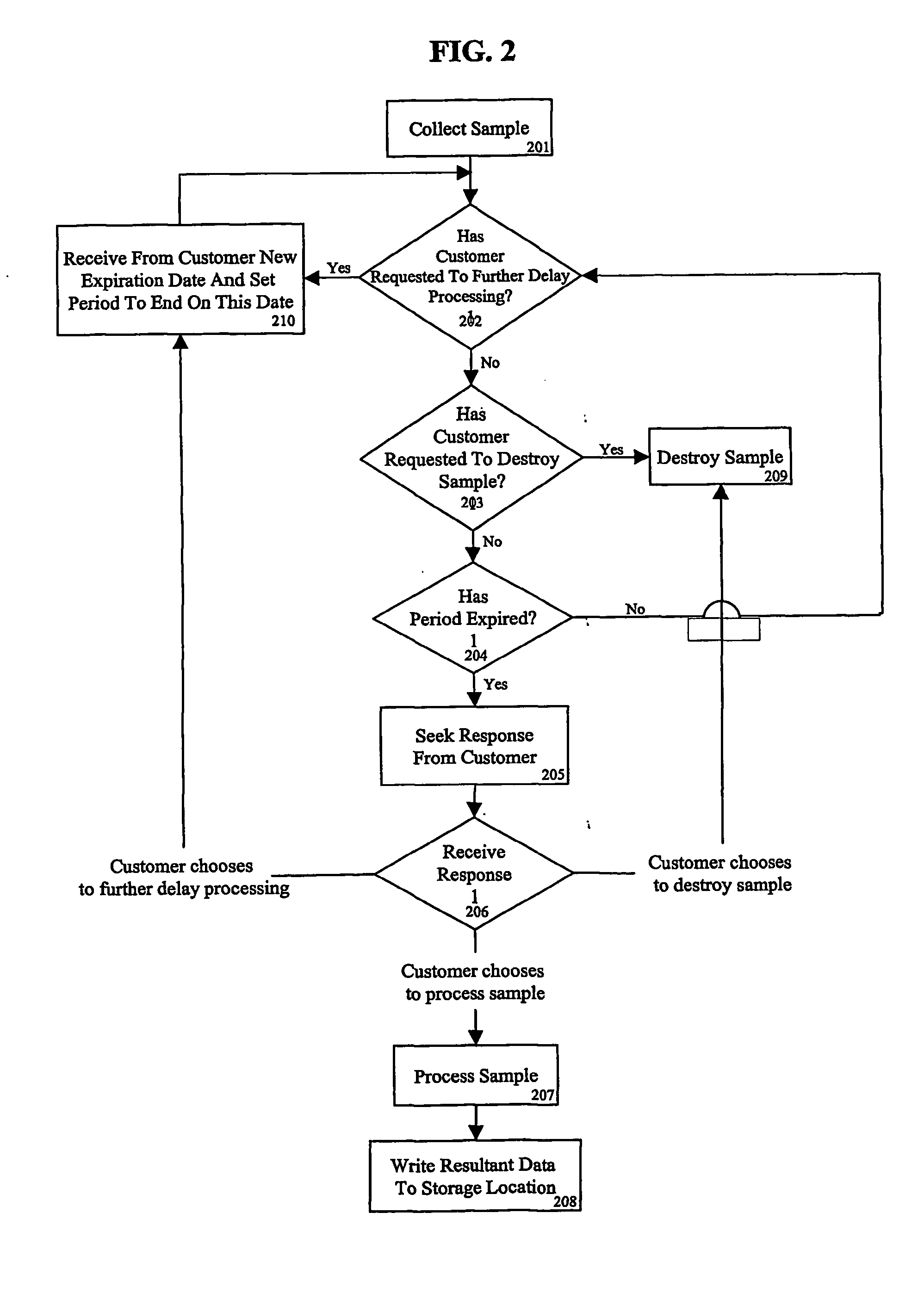System and method for the management of genomic data
a genomic data and management system technology, applied in the field of genomic data management systems and methods, can solve the problems of discrimination, unemployment, disability, etc., and few individuals have taken advantage of genomic-based services, and genomic-based services such as genetic testing have been heretofore inconvenient to us
- Summary
- Abstract
- Description
- Claims
- Application Information
AI Technical Summary
Benefits of technology
Problems solved by technology
Method used
Image
Examples
first embodiment
In an example of the first embodiment, once permission has been secured the genomic data and any additional information is copied to a “transient storage area” to which the service provider is granted access. In a preferred embodiment, a temporary identification number corresponding to the user and a description of the service requested is also copied to the transient storage area. By use of a temporary identification number, the service provider does not know the identity of the individual for whom the service is being performed.
In embodiments where the genomic or additional information is stored on a data card, the user places her card in an I / O terminal with card reader 105. The data is copied from the card to the transient storage area.
In embodiments where the genomic or additional information is stored on storage device 102, this copying may be actual or virtual. In the actual case, the data is copied to the transient storage area and the service provider is given access to ...
third embodiment
The third embodiment is like the second, but the data package is not made available to the service provider for downloading. Instead, it is placed on a data card that is physically delivered to the service provider.
Such a “self-destructing data card” would preferably be a smart card or some other card with on-board computing abilities. The on-board computational device would be programmed with a series of events that should result in “self-destruction” of the data, as well as with a self-destruct routine. These events would include, among others, those described in connection with the above-described self-destructing data package. The computational device would watch for these events, and when one occurred the processor would execute a routine which would delete the card's data contents. In preferred embodiments, the card would also have the features of the above-described permanent data card. For example, the card would preferably have its data stored in an encrypted format, with ...
fourth embodiment
In the fourth embodiment, the service provider reads the genomic data, and perhaps additional information, directly from a data card. Thus, the provider only has access to this data during the period of time for which the card is in the card reader. Once the card was removed from the reader, access would no longer be possible.
In one scenario, the card reader would be located at the third party's physical location, and the individual would go there to insert his card. In another scenario, the individual would insert the card at a reader distant from the third party, such as a reader-equipped I / O terminal 105, and the service provider would read the data from the card via a secure and preferably encrypted network connection. Preferably, the card reader would capture or otherwise lock the card into place in a manner that it could only be removed from the reader by the owner of the card. In this way the individual could go to a card reader location, insert her card, and retrieve it at ...
PUM
 Login to View More
Login to View More Abstract
Description
Claims
Application Information
 Login to View More
Login to View More - R&D
- Intellectual Property
- Life Sciences
- Materials
- Tech Scout
- Unparalleled Data Quality
- Higher Quality Content
- 60% Fewer Hallucinations
Browse by: Latest US Patents, China's latest patents, Technical Efficacy Thesaurus, Application Domain, Technology Topic, Popular Technical Reports.
© 2025 PatSnap. All rights reserved.Legal|Privacy policy|Modern Slavery Act Transparency Statement|Sitemap|About US| Contact US: help@patsnap.com



